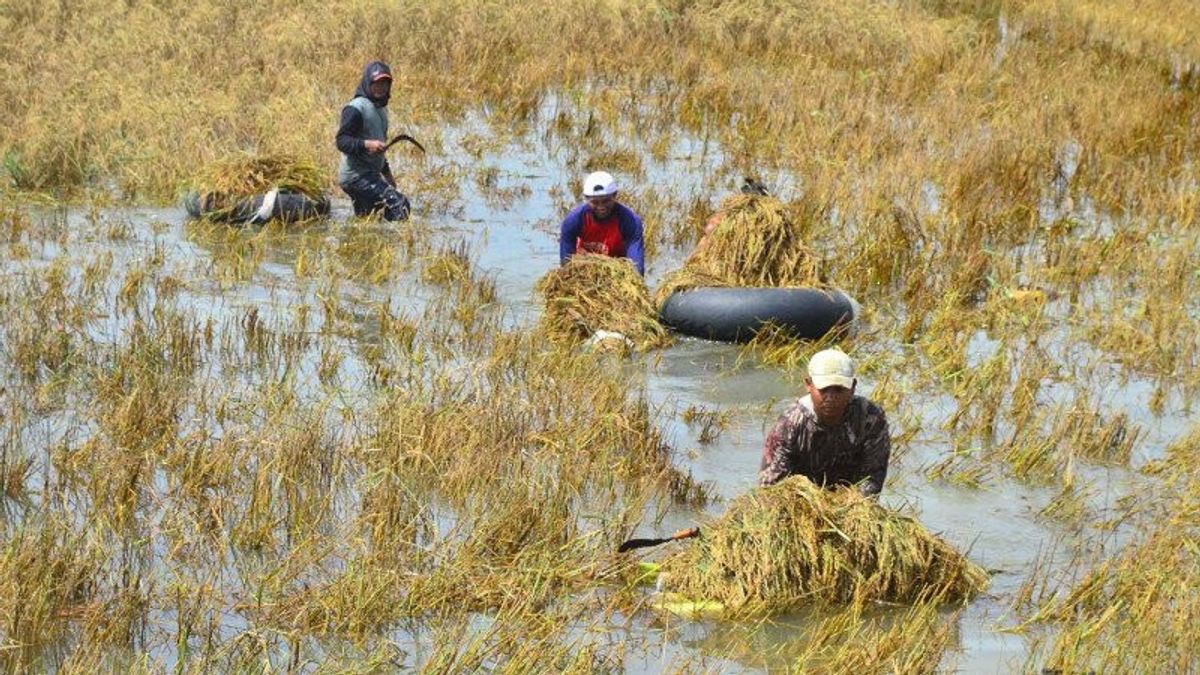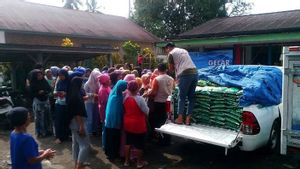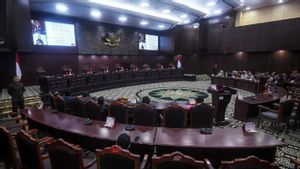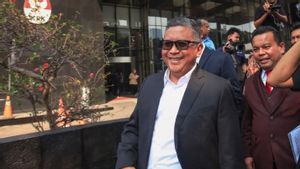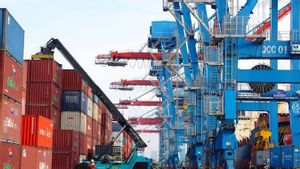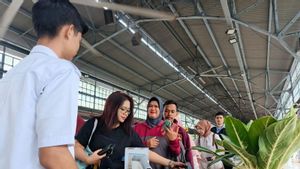JAKARTA Climate crisis is said to be one of the causes of the recent soaring price of rice. Is that true?
Chairman of the Meteorology, Climatology and Geophysics Agency (BMKG) Dwikorita has warned about El Nino which will last a long time since the middle of last year. At that time, the government had warned about the threat of crop failure which made rice production decline.
Regional governments need to carry out mitigation actions and immediate preparedness. Farming land risks experiencing puso aka crop failure due to lack of water supply during the plant growth phase," said Dwikorita, quoted from the BMKG official website, in July 2023.
And that's true, rice harvest has suffered a setback from what it should be, while demand for rice remains the same, and even tends to increase. As a result, rice prices are not only expensive, but are also rare everywhere. The government even has to import 2.5 million tons to fill the stock of reduced rice reserves due to the effect of El Nino.
The question is, is the climate crisis the only reason why rice prices in Indonesia continue to soar?
Ahmad Arif, co-founder of Project Multatuli as well as author of the book Indigenous Peoples and Food Security does not deny that El Nino, which has been going on since March last year, has implications for reducing food production. This is due to the reduced rainfall in Indonesia due to El Nino.
But on the other hand, according to Arif, the climate crisis is not the sole cause of the high price of rice. He said the current increase and scarcity of rice are a matter of wrong governance.
"What is happening today is more about governance issues, irresponsible if you only blame the weather," said Arif in IG Live entitled Rice Mahal, Right Climate Salah? which was held on Wednesday (6/2/2024) night.
Talking about climate, we all know that the climate crisis cannot be improved, although the risks to human life and other earth creatures can be minimized. In fact, the climate crisis from year to year is getting worse.
This is a problem for Indonesia, which depends on food security only on rice. When climate trends worsen, the implications for the food sector are very large because rice is a plant that is very vulnerable to changing rain patterns.
According to Arif, this is what Arif should have thought for a long time. Not forcing people to depend on homogeneous commodities, namely rice, should be a solution so that we don't depend on rice.
"In facing climate change, we have to find out what plants are most adaptive to climate change," said Arif.
What kind of food has good durability? Indonesia actually has it, has a wealth of food sources," added the man who also works as a journalist.
In fact, according to Arif, traditional indigenous peoples have the ability to cultivate other plants besides rice. One of them is tubers, sago which are barely affected by climate.
"Umbi, sago, sukun tree, is a source of carbohydrates that we ignore. Because we only see rice and flour as food sinks. We ignore the diversity of food around us too much, which can be different in each place," explained Arif again.
The Indonesian people's dependence on rice has been ingrained for a long time. One of these is because of the government's policy of being obsessed with rice, or rice, since ancient times.
Quoting the writing Suap dari Bayi Sampai Mati, Domination dan Obsession pada Nasidi Project Multatuli, dominasi beras terjadi sejak Indonesia belum mendekasi, terutama di Pulai Jawa. Kebijakan memuja' beras ini mulai dilengkapan sejak masa pemerintahan Presiden Soekarno.
Soekarno agreed with the idea of the Minister of People's Food Supply, Kasimo, in 1948 regarding the food self-sufficiency program. The essence of this program is the intensification and extensification of agricultural land. Intensification is by increasing superior seeds, and extensification by clearing land in Sumatra.
Soekarno actually began to realize that rice could not be a single solution for food affairs. This was revealed by Ahmad Arif in the book Indigenous Peoples and Food Sovereignty. He also echoed that corn would become a substitution of rice and change the food menu.
Unfortunately, when Soekarno stepped down, the obsession with rice continued in the New Order Government led by President Soeharto which promoted massive rice self-sufficiency. Dependence on rice is endemic in society. Even when the New Order falls, it does not bring changes to the pattern of rice consumption.
SEE ALSO:
In the era of President BJ Habibie, domestically made aircraft had been exchanged for Thai rice. Even in the era of President Abdurrahman Wahid and Megawati Soekarnoputri who imported rice to answer the shortage of food stocks. Obsession to rice continued in the era of President Joko Widodo, with a completely failed food estate.
"Now how the government makes food policies that are more diverse. The rice fields printing program only makes us more distant to the hope of making food more diverse," said Mawa Kresna, editor of Project Multatuli.
The English, Chinese, Japanese, Arabic, and French versions are automatically generated by the AI. So there may still be inaccuracies in translating, please always see Indonesian as our main language. (system supported by DigitalSiber.id)
